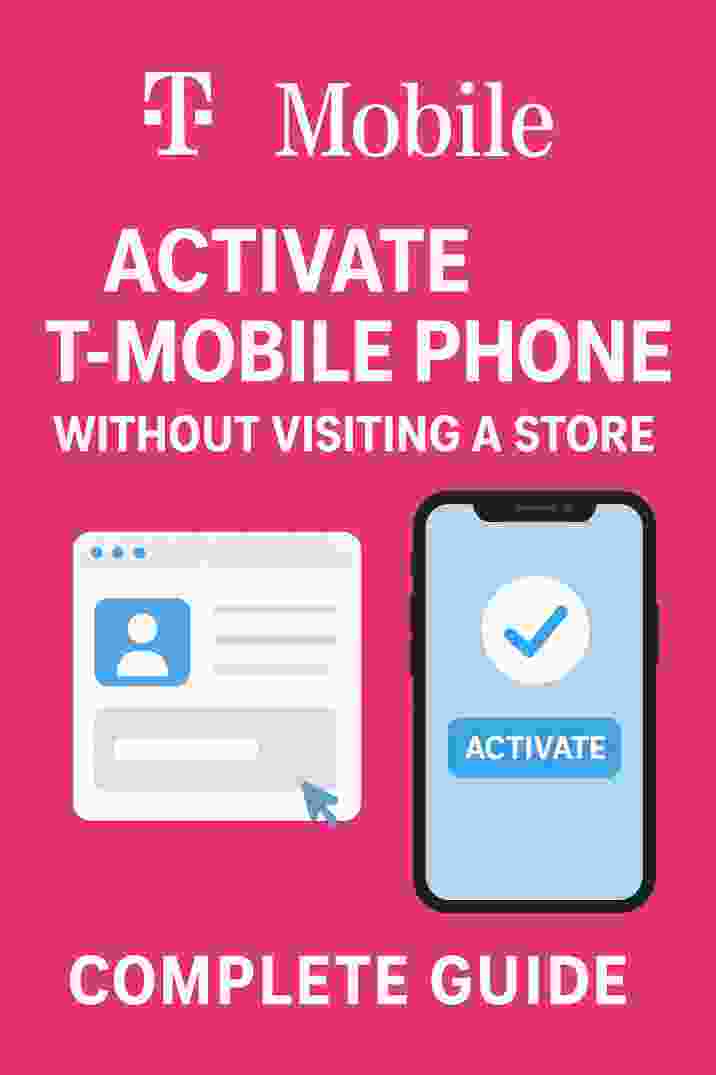Modern life demands constant connectivity. In fact, over 98% of U.S. adults own a cell phone, yet despite ubiquitous coverage, more than 72% of Americans still report dropped callsIn-vehicle dead zones, rural gaps, and building interference can cripple mobile reception on the road. A mobile phone booster car (car signal booster) addresses this by amplifying weak signals as you drive. Essentially, a car booster uses an external antenna on your vehicle to capture distant cell signals, amplifies them with a booster unit, and then rebroadcasts the stronger signal inside your vehicle.

This process gives your phone clearer reception for calls and data, virtually eliminating dropouts even in remote areas. The rest of this article explains how car boosters work, their benefits, installation, and top considerations, so you can stay connected anywhere you go.
What Is a Mobile Phone Booster for Cars?
A mobile phone booster car (vehicle cell phone signal booster) is a specialized device that improves cellular reception inside a car, truck, or SUV. As SureCall explains, a car signal booster “captures weak signals and amplifies them inside your vehicle,” resulting in clearer communication, fewer dropped calls, and a stable data connection no matter where you drive. In practice, this means if you often see low bars or “No Service” on your phone dashboard, a booster can provide a strong, consistent signal. These boosters are essentially cell phone amplifiers designed for automotive use.
How Car Signal Boosters Work
Most car boosters use a two-antenna system. An external antenna (often magnetic or shark-fin style) is mounted on the vehicle’s roof or rear window. This antenna picks up the weak cellular signals from nearby towers. The captured signal is sent via cable to a booster unit (an amplifier) located inside the car. The booster strengthens (amplifies) the signal and feeds it to an internal antenna (mounted inside the vehicle).
Your phone then communicates with this boosted internal signal rather than the weak outside signal, giving it much better reception. In short, an external antenna gathers the signal and an internal antenna rebroadcasts the enhanced signal for your phone. This setup works for voice, text, and data, improving 4G LTE and 5G coverage on the go.
Benefits of Using a Car Signal Booster
Installing a car booster offers many advantages:
- Reliable Communication: Ensures uninterrupted calls and texts, even in fringe or rural areas.
- Emergency Safety: A strong signal can be life-saving, enabling you to reach emergency services or share your location during a crisis.
- Better Navigation: GPS apps and real-time maps work smoothly, since they depend on stable data links.
- Entertainment on the Go: Stream music, video, or apps without buffering hiccups, making long drives more enjoyable.
- Increased Productivity: Work emails, calls, or video chats from your car become feasible when you have a consistent connection.
- Battery Savings: With a stronger local signal, your phone’s radio doesn’t have to “search” as hard, saving battery life on long trips.
In practice, users report far fewer dropped calls and much faster data speeds after adding a booster. This is especially valuable in dead zones or highway stretches where coverage dips. Even city drivers benefit, as boosters can cut through building interference. In short, a mobile phone booster for your car turns frustrating dead spots into reliable signal zones.
Compatible Vehicles and Devices
Car boosters are highly versatile. They work in virtually any vehicle: sedans, SUVs, pickup trucks, RVs, vans and even boats. Whether you commute in a small car or drive a large RV, a booster can be chosen to match that coverage area. Likewise, boosters are carrier-agnostic: one system often supports all major U.S. networks (Verizon, AT&T, T-Mobile, etc.) simultaneously. They also handle any cellular device – smartphones, tablets, or even IoT modems. So an iPhone, Android, or any cellular tablet will enjoy improved signal from the booster. In short, pick a booster designed for your vehicle size, and it will help all your devices and all your lines of service.
Choosing the Right Mobile Phone Booster Car
When selecting a car booster, consider these key factors:
- Coverage Area: Car boosters vary in power. A typical car or small SUV needs less coverage than an RV or fleet vehicle. Match the booster’s stated coverage to your vehicle size – higher-gain units for larger vehicles or extreme conditions.
- Carrier Compatibility: Ensure the booster you choose supports your specific carrier frequencies (most boost multi-band signals). For example, if you use Verizon and T-Mobile, confirm the booster amplifies those bands. Most name-brand boosters list compatible providers explicitly.
- Installation: Some kits are “plug-and-play” (mag-mount antennas and adhesive mounts), while others require drilling or wiring. If you want quick setup, look for a simple kit. Also check the quality of included antennas and cables – better hardware means better performance.
- Features: Modern boosters often support 4G/LTE and 5G (sub-6GHz) networks. If you need 5G service, choose a “5G-ready” booster.
- Budget & Reviews: Prices range from ~$100 to over $500 depending on power and features. Read customer reviews for real-world performance and reliability; user feedback can highlight installation quirks or signal improvements.
By balancing these factors, you’ll find a booster that fits your driving habits and budget while maximizing coverage. Industry reviews and FCC compliance can also be good tiebreakers.
Installation Tips
Installing a car signal booster is usually straightforward:
- Mount the External Antenna: Place the antenna on the vehicle’s roof or rear window. The roof is ideal for the clearest reception. Magnetic or fixed mounts work; ensure a ground plane or metal surface if required.
- Place the Booster Unit: Inside the car (often under a seat or behind panels) mount the amplifier. It should be in a dry, secure spot.
- Connect Antenna Cables: Run coax cables from the external antenna down to the booster. Keep the cable length as short as feasible to minimize loss.
- Install the Internal Antenna: Mount the inside antenna (often on the dashboard or headliner) at least a few feet away from the external antenna. This separation prevents oscillation (“feedback”) and ensures stable performance.
- Power the Booster: Plug the amplifier into your vehicle’s 12V power outlet. Some units draw minimal power; others power on with the ignition.
Following the above steps (which often come with the kit) will typically have you up and running in minutes. It’s as easy as mounting the antenna, running the cables, and powering up. For best results, double-check antenna connections and consult the manual.
5G Compatibility and FCC Compliance
Most modern car boosters are 5G-capable on 4G/5G carrier bands. For example, since AT&T and Verizon deploy 5G on the same frequencies as LTE, virtually all boosters that work on LTE also support 5G sub-6GHz. (Just note that ultra-high-frequency mmWave 5G boosters are rare, though mmWave coverage is still limited to major cities.) Reputable boosters are FCC-certified and comply with carrier regulations. In fact, U.S. law requires any consumer booster to meet FCC technical standards and be registered with your carrier.
Leading carriers automatically authorize certified boosters, so you simply buy a compliant unit and register it online (often a quick five-minute form). This ensures legal operation without interfering with network. In summary, use a certified “driver/car” booster and register it with your carrier for full compliance and peace of mind.
Engage and Share
Upgrading your car with a mobile phone booster can dramatically improve your driving experience. Fewer dropped calls, faster navigation, and seamless streaming all add convenience and safety. If you found this article helpful, feel free to share it on social media or leave a comment below sharing your road-testing experiences. Your feedback helps others find the right car booster and keeps us informed of real-world tips.
FAQs
Q: What is a mobile phone booster for a car?
A: It’s a device that amplifies cellular signals inside your vehicle. It consists of an external antenna (on the roof or window), an amplifier unit, and an internal antenna. Together they capture weak outside signals and rebroadcast them inside the car, improving call quality and data speeds.
Q: Do car boosters work with all carriers and phones?
A: Yes. Most car boosters are multi-band and carrier-agnostic. This means a single booster can enhance signals for any supported network (e.g. AT&T, Verizon, T-Mobile) and all cellular devices (smartphones, tablets, etc.). Just ensure the booster’s frequency bands cover your specific carrier.
Q: How much improvement can I expect?
A: Results vary by location and booster model, but many users see significantly stronger reception – for example, going from 1 bar to 4 bars. This translates to far fewer dropped calls, more reliable navigation, and noticeably faster data transfer. In lab tests, car boosters increase signal strength and phone throughput dramatically under weak-signal conditions.
Q: Are car signal boosters legal?
A: Yes – provided they are FCC-certified and used properly. U.S. regulations require boosters to meet technical specs and be registered with your carrier. Most commercial boosters today comply out of the box. After purchase, simply register the booster’s info (your phone number, address, etc.) with your provider (AT&T, Verizon, etc.) – a quick online form. This registration helps carriers manage network interference and is required by law.
Q: Will a booster improve 5G coverage in my car?
A: Generally, yes for non-mmWave 5G. Car boosters that support 4G LTE (bands below ~6GHz) inherently boost the same frequencies on which AT&T and Verizon run 5G. So if you have 5G (sub-6GHz) signal from those carriers, a booster will enhance it. Note that ultra-fast mmWave 5G (seen only in dense urban areas) is not typically supported by mobile boosters.
Q: What should I consider before buying a car booster?
A: Key factors include the coverage area needed (car vs. RV), carrier/frequency support, ease of installation, and price. Check that the booster covers all your carriers’ bands. Read reviews on real-world performance. Ensure the antenna mounting options fit your vehicle. Finally, compare costs: basic car kits start around $100, with high-end multi-vehicle kits up to $500. Balance features with budget to choose the best signal booster for your driving needs.
Q: How do I install a car signal booster?
A: Installation is usually simple. Mount the external antenna on the roof or rear window (for best reception). Place the amplifier box inside (under a seat or console). Run the cable from the external antenna into the box, then connect the internal antenna on the dash or headliner, keeping it some feet away from the roof antenna. Finally, plug the booster into the car’s power outlet. Most kits include everything you need, and many are “plug-and-play.”
Q: Can I use the booster for multiple devices at once?
A: Yes. Once active, the booster improves the signal throughout the vehicle’s interior. All phones and tablets in the car (or RV) will enjoy the better signal simultaneously. There’s no need to switch devices on/off the booster; it continuously lifts the overall signal floor for any connected device.
Q: Will a booster drain my car battery?
A: Not significantly. Car boosters draw a small amount of power (often under 2 amps) when active. In normal use (engine running or accessory mode), this is negligible. To avoid any drain, you can unplug the booster when the car is off for extended periods. In general, the boost to signal (and thus phone battery savings) outweighs the tiny power usage.
By installing a quality mobile phone booster car, you’ll cruise with confidence knowing your phone signal is strong. Fewer dropped calls, faster GPS, and uninterrupted data make every drive smoother. Remember to choose an FCC-certified booster, register it with your carrier, and follow the simple installation steps above. Then, no matter where the road takes you, you’ll stay connected.
Sources: Authoritative guides and manufacturer resources were used to compile this information. Each recommended practice aligns with current industry standards and FCC regulations.


